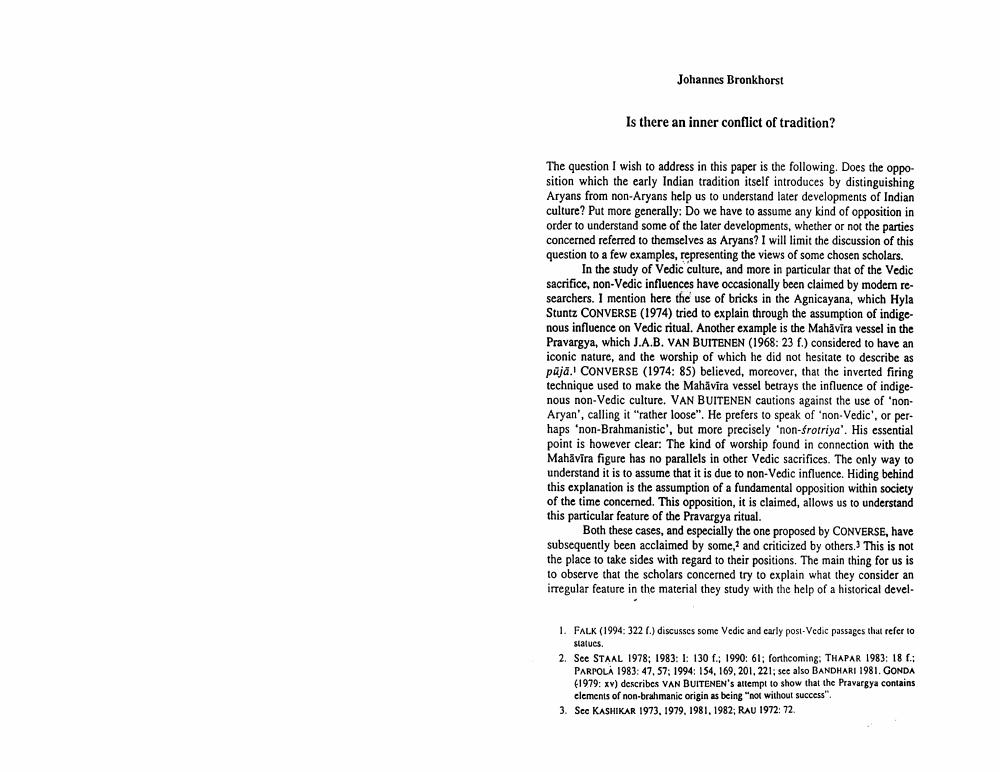________________
Johannes Bronkhorst
Is there an inner conflict of tradition?
The question I wish to address in this paper is the following. Does the oppo sition which the early Indian tradition itself introduces by distinguishing Aryans from non-Aryans help us to understand later developments of Indian culture? Put more generally: Do we have to assume any kind of opposition in order to understand some of the later developments, whether or not the parties concerned referred to themselves as Aryans? I will limit the discussion of this question to a few examples, representing the views of some chosen scholars.
In the study of Vedic culture, and more in particular that of the Vedic sacrifice, non-Vedic influences have occasionally been claimed by modem researchers. I mention here the use of bricks in the Agnicayana, which Hyla Stuntz CONVERSE (1974) tried to explain through the assumption of indige nous influence on Vedic ritual. Another example is the Mahāvīra vessel in the Pravargya, which J.A.B. VAN BUITENEN (1968: 23 f.) considered to have an iconic nature, and the worship of which he did not hesitate to describe as pūja.CONVERSE (1974: 85) believed, moreover, that the inverted firing technique used to make the Mahavira vessel betrays the influence of indigenous non-Vedic culture. VAN BUITENEN cautions against the use of 'nonAryan', calling it rather loose". He prefers to speak of 'non-Vedic', or perhaps 'non-Brahmanistic', but more precisely 'non-frotriya'. His essential point is however clear: The kind of worship found in connection with the Mahavira figure has no parallels in other Vedic sacrifices. The only way to understand it is to assume that it is due to non-Vedic influence. Hiding behind this explanation is the assumption of a fundamental opposition within society of the time concemed. This opposition, it is claimed, allows us to understand this particular feature of the Pravargya ritual.
Both these cases, and especially the one proposed by CONVERSE, have subsequently been acclaimed by some, and criticized by others. This is not the place to take sides with regard to their positions. The main thing for us is to observe that the scholars concerned try to explain what they consider an irregular feature in the material they study with the help of a historical devel
1. FALK (1994: 322 1.) discusses some Vedic and carly post-Vedic passages that refer to
statues. 2. Sec STAAL 1978; 1983: 1: 130 f.; 1990: 61; forthcoming: THAPAR 1983: 18 f.:
PARIOLA 1983: 47, 57, 1994: 154, 169, 201, 221; see also BANDHARI 1981. GONDA
1979xy) describes VAN DUITENEN's attempt to show that the Pravargya contains
elements of non-brahmanic origin as being not without success" 3. See KASHIKAR 1973, 1979, 1981, 1982; RAU 1972: 72




